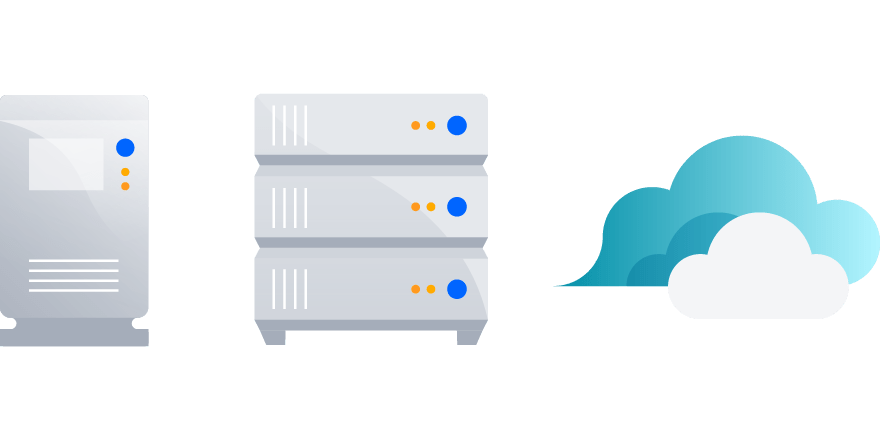How we prioritize features for our Server and Data Center products
At Atlassian, we believe in providing our customers with deployment choice, whether that is in the Cloud managed by Atlassian or self-managed on your infrastructure of choice with Server or Data Center.
Recently, we released two new Data Center-only features: read-only mode for Confluence Data Center and project archiving for Jira Software Data Center. Based on your feedback, and in the spirit of “open company, no bullshit“, we wanted to share more details about how we prioritize development for our self-managed offerings.
Our self-managed offerings
Let’s start with an overview of our self-managed offerings and who uses each option.
Server: This is our original offering for customers that want to download our software and install it on a single server that they can control. It’s great for teams of all sizes – especially those with specialized needs because of the complete control and customization it offers.
Data Center: We introduced our Data Center offering specifically in response to enterprise customers’ feedback – they had needs that went well beyond the capabilities of a single server application. Our Data Center products run in a customer’s own infrastructure or on top of an Infrastructure-as-a-Service provider like Amazon Web Services (AWS) or Azure. Data Center is focused on providing high availability, performance at scale, and administrative control.
How we prioritize features for Server and Data Center
As we introduce new features and capabilities, we look for two things to determine whether a feature is for Server and Data Center or Data Center-only:
1. Is the feature intended for our enterprise customers looking for the benefits of Data Center?
2. What role is the feature primarily targeted at?
Aligning with Data Center benefits
We start by considering if a new feature or functionality is targeted at supporting enterprise teams as they scale their mission-critical Atlassian applications. Here are a few of the questions we ask to determine if a feature serves our Data Center customers:
- Does this feature deliver uptime and business continuity that enterprises need?
- Does this feature improve performance at scale?
- Is the feature targeted at providing more control and administration at scale?
- Does this feature provide deployment flexibility, such as taking advantage of an Infrastructure-as-a-Service provider? (eg. Amazon Web Services or Azure)
- Is the feature best built on a multi-node architecture?
If the answer to any of these questions is “yes” or “maybe”, we follow up with an internal discussion on how these features support the benefits of Data Center.
Roles
Next, we consider who will use or benefit from a new feature or functionality. Across our Server and Data Center products, we have four roles or levels of access:
- End users
- Project, repo or space admins
- Global admins
- System admins
The primary role targeted by the feature has an impact on whether it will be available to both our self-managed offerings or Data Center-only. Features that will benefit end users or project, repo or space admins, like mobile apps for our products, will go into both offerings. Global admin features are more likely to be Data Center-only. Infrastructure-related features, which are controlled by system admins, tend to be Data Center-only.
The process in action
We take this information and use it to prioritize across all of our Data Center products – Jira Software, Jira Service Desk, Confluence, Bitbucket, and Crowd – as early as possible in the planning process, to help us determine how we bring new functionality to the customers who need it most. To give you a better understanding of how we make roadmap decisions, here are some examples of when we’ve used this process.
Features like real-time collaborative editing in Confluence and easier approvals in Jira Service Desk help end users save time and move work forward, faster. As end-user features, they are available for both Server and Data Center customers.
On the other hand, features like read-only mode in Confluence Data Center and project archiving in Jira Software Data Center are designed for system admins. Read-only mode delivers value for high availability since it minimizes planned downtime by allowing end users to continue to consume content while system admins perform a range of maintenance related activities. Project archiving improves performance at scale for Data Center customers, due to their need for administrative control across an enterprise deployment.
Building with our values
We are passionate about customer success and we look to two of our values, “build with heart and balance” and “don’t #@!% the customer”, when building our roadmaps. Even though we use this process across our various product teams, we are constantly challenging ourselves to focus on the needs of each offering’s core customers. Whether you’re using Server or Data Center, we continue to improve our products in a way that reflects your needs.
Your feedback also continues to help us shape the future of Server and Data Center, so keep it coming! While we don’t always get a chance to respond to every request, they do have an impact on our roadmap. We look to feedback in the Atlassian Community, on our public Jira instance, at Summit, and in all other forums, so we can continue to improve.
